Establishing the relationship that exists between environmental noise and its impact on human longevity
Some little things as small as they are, when left unattended can cause debilitating effects on our well-being as humans. Today we will be aiming to bring discuss something that we all know on a lighter note but we have to some extent neglected.
Noise as defined in physics is simply a product or a resultant effect of irregular frequencies. These frequencies are incoherent and irregular and as a result, they create unpleasant sounds that can be disturbing. This definition has a physics and technical origin but it is still not far from a layman's definition.
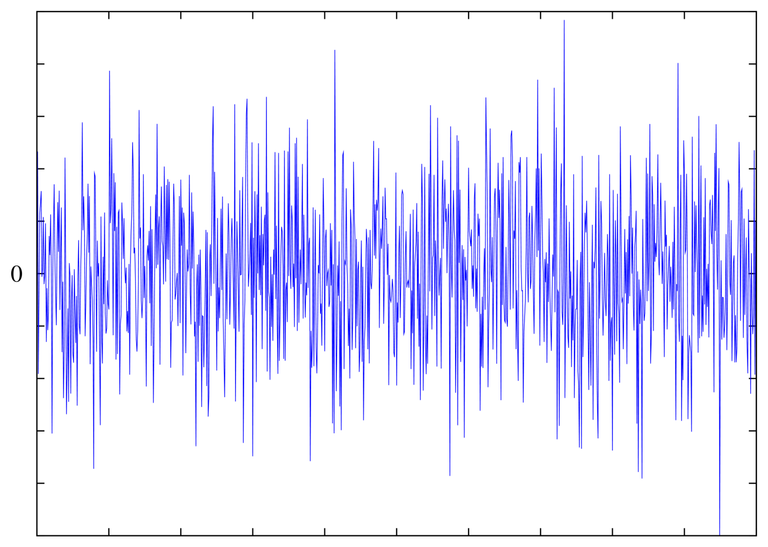
Noise
Any sound that causes an unpleasant feeling and disturbance is regarded as noise. It is a type of sound that is disruptive and most times highly offensive to people. Usually why they are disturbing because of two reasons; one of which is that they are irregular, and secondly, they always make no sense and they can be very loud.
Sounds with very high frequency can also cause unpleasant and disruptive effects on humans. The human ear has a normal range of sound reception (20Hz - 20kHz) and when sounds beyond this range are detected or received, they could cause permanent damage to the eardrum aka tympanic membrane, or they could shut up some chemicals in the body that have deleterious effects.
Where the problem lies is in the unpleasant feeling it causes to humans and that is where our focus on this article will be. How does noise affect us as humans besides the unpleasant feeling associated with it? Does it have any impact on our health? How can they be managed and reduced?. Reading this article will expose you more to the unknown about noise as well as the effects of sounds with high frequencies. Let's first start by understanding sounds, this time, in relation to the medical industry.
Basics about sounds
Sounds are generated when a substance or material vibrates, and in the process, sending out waves known as sound waves. Humans are able to hear these sounds when the waves hit the tympanic membrane of the ear. Some of the sounds may or may not be acceptable, some could even be inaudible.

Sound Waves
As Humans, during early development, our ears are highly sensitive to higher sound frequencies but on maturity, we gradually loose this sensitivity. This simply means that, we tend to hear better at younger age than at older age.
Hearing ranges differs in all species of animals and humans just as the degree of sensitivity also differs. Animals like bat are highly sensitive to very high frequencies (UpTo 200kHz) but they are less sensitive to sounds with lower frequencies.
Now, depending on their frequency, sounds are mainly classified into two namely - Infrasonic and ultrasonic.
Infrasonic sounds are generally sounds that are below human sound audibility range of (20Hz to 20kHz). Usually these type of sound are within the range of (0.1Hz - 20Hz). They are at the lower range of sound detection by the human ears and basically do not have any dangerous effects on humans.
Unfortunately, the above definition seemed correct not until the reports of (Watanabe and Møller, 1990) and (Yeowart et al., 1967) disputed it. Watnabe and Miller were able to prove that even as low as 4Hz in acoustic chamber, the human ear could still detect sounds. Likewise in the work of Yeowart, they were able to measure hearing threshold in earphones up to as low as 1.5Hz. This leaves us to the question, what then can we call them?
Hearing sensation does not suddenly cease at 20Hz when the frequency is reduced, but continues from 20Hz down to very low frequencies of several hertz, such that it is not possible to define an inaudible infrasound range and an audible audio range as separate regions, unless the infrasound range is limited to naturally occurring infrasound of very low frequencies.
Rather than referring to them as inaudible sounds below 20Hz, they are better much referred to as low frequency sounds. In this way, they become perfectly fit for what they
really are. This is exactly what science is all about, theories and laws sometimes can be disproved when more advanced methodologies and fact emerge through research.
You find more of infrasonic sounds produced during most natural phenomenon like earthquakes, volcanoes, thunder etc. In the same vein, they are also used to monitor how minerals and earthquakes are formed.
One of the very important uses of this type of sound in the medical field is in seismocardiography (this involves the study of the mechanics of heart functions as it relates to human body vibration caused by heart beat). In addition, it is also used in ballistocardiography (used to produce a graphical image of how the body moves and responds as a result of the beating and blood pumping action of the heart).
Ultrasonic sounds aka ultrasounds
Ultrasonic sounds on the other hand are sounds with higher frequency far greater than the hearing range of humans. Most times, people erroneously refer ultrasonic sounds as being the same as supersonic sounds. The two are actually different concept. Supersonic sounds are made by anything that can travel at a speed greater than 343m/s (speed of sound) while on the other hand, Ultrasonic sounds are the sounds greater than the normal range limit for human hearing. They are sounds at the upper limit and greater than 20kHz.
Ultrasonic sounds cannot be perceived and heard by humans but animals like bat can detect them. They have the highest uses in the medical field. It is used in conducting Ultrasonography, a procedure that is carried to observe the status of an unborn child. The procedure produces image of the developing child which can then be captured for examination, to get sure it is healthy. They are also used in detecting abnormalities associated with blood vessels.
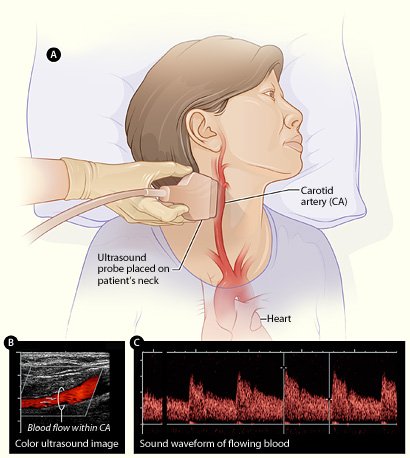
Carotid ultrasound - Figure A shows how the ultrasound probe (transducer) is placed over the carotid artery. Figure B is a color ultrasound image showing blood flow (the red color in the image) in the carotid artery. Figure C is a waveform image showing the sound of flowing blood in the carotid artery.
Furthermore, properties of ultrasonic sounds are also used in the production of medical machines use for a procedure known as Echocardiography aka Electrocardiogram. Echocardiography is a procedure that is concerned with finding out the state of the heart. It also produces pictorial charts that can be studied to know the state of the patient.
Understanding the normal mechanics of the heart is very important in understanding abnormalities. Diagnosis moves from the known to the unknown and a perfect way this can be effectively and accurately done is through ECG. By mere looking at the the overall heart beat pertain - the electrocardiogram, you would be able to detect abnormalities.
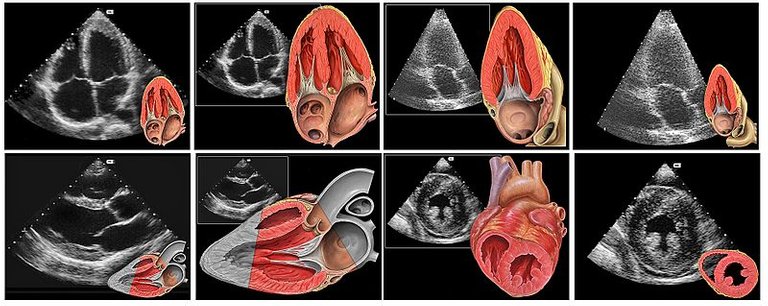
Transthoracic echocardiography
Not only do ultrasounds display the state of internal organs, they are used to detect abnormalities in organs and also helps make diagnosis more faster and accurate. They go beyond just detection, thy also are curative in nature and thus are applied and used in some therapeutic procedures.
Tissues healing is one of the most important therapeutic application of ultrasounds and the principle behind this, is the transmission of sound wave energy to the tissue. But for this to happen, the thickness and density of the tissue is always out into consideration. Thicker tissues will always require higher dose of the ultrasound than lighter ones.
Sound waves are longitudinal waves consisting of areas of compression and rarefaction. As the energy within the sound wave is passed to the material, it will cause oscillation of the particles of that material. Clearly any increase in the molecular vibration in the tissue can result in heat generation, and ultrasound can be used to produce thermal changes in the tissues.
The production of heat simply fast tracks the healing process in tissues and also at the same time promote better healing process.
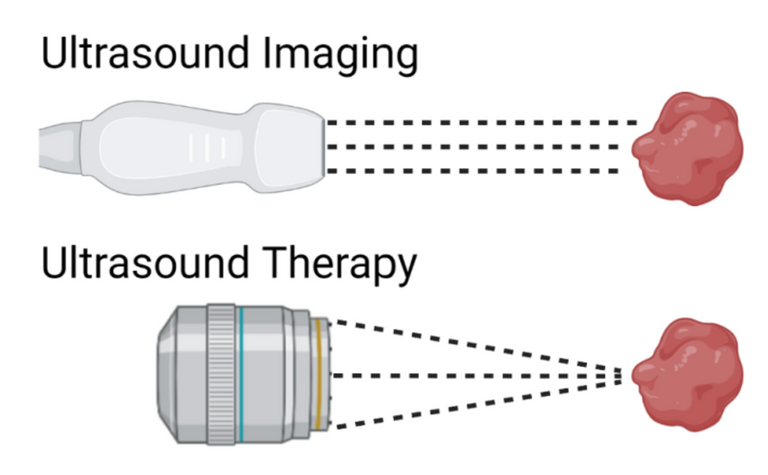
Dual function of ultrasound - The top ultrasound probe deposits ultrasound waves over a large area of tissue for imaging purposes while the bottom probe is a focused ultrasound probe that deposits the ultrasound energy on a very small area of the target tissue for therapeutic purposes.
Another ultimate importance of ultrasound therapeutic application in medicine is that, it makes diagnosis non invasive and less painful, in fact, zero pain. For example, a patient with kidney stones can be examined using ultrasound to confirm the location and size of these stones without having to cut the body open.
The utilization of ultrasound has made diagnosis and treatment of diseases less cumbersome and this perfectly aligns with the long term goal of future disease management - making treatment noninvasive at all cost. This is the basics about sounds and their applications especially in medicine. Let's go further to discuss the various impact sounds have ok human health.
Relationship between sounds and the human health
Sounds are generally measured in decibels. They constitute nuisance when they exceed 70dB. Sounds with irregular frequencies are regarded as noise as we earlier pointed out. At a measurement of over 120dB, noise can have serious damaging effect on the ear.
If you need to raise your voice to be heard at an arm’s length, the noise level in the environment is likely above 85 dB in sound intensity and could damage your hearing over time.
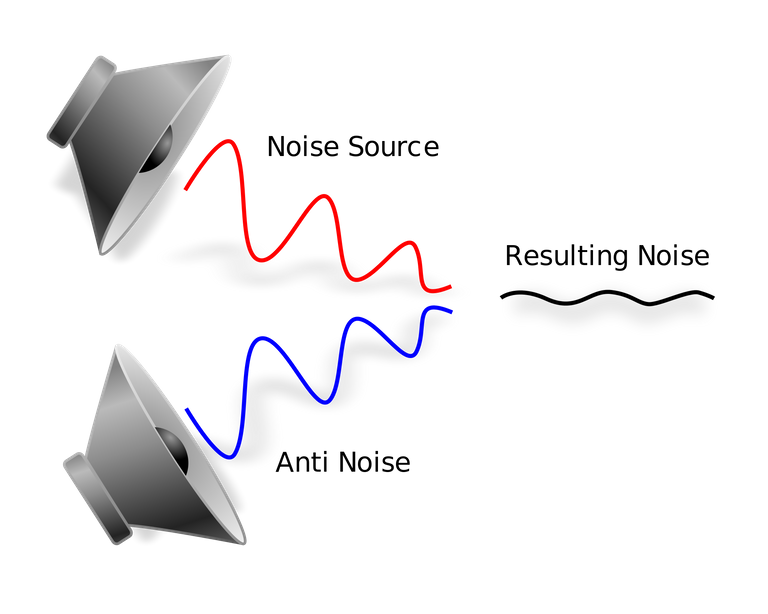
Noise reduction strategy
Using noise reduction equipment, the effects of noise with high decibels can be reduced to support normal hearing intensity. As we talk, the normal intensity is about 60dB. Noise are usually countered or reduced by using a counter frequency against the noise frequency. It is worthy of note, it is not the noise that has damaging effect but its intensity. The higher the noise intensity, the greater its damaging effects and vice versa.
Noise and longevity in humans
Various research studies have for a fact confirmed and shown that noise has the capability of reducing the life span of humans. This happens through various pathway and one of which is what we intend to discuss as we go on. You might be wondering, how possible is this and how does it happen? Read on to find out.
Recall that noise are unwanted frequencies that can cause damaging effect to the ear when they are at higher intensity. They are able to cause distress and to a greater extent cause severe discomfort that can come in the form of headache. Usually, the first organ that feels the impact of noise and its damaging effects is the ear since it is the organ responsible for sound perception.

Human stress and associated side effects
One of the major way through which noise affect longevity in humans is through a well known mechanism - Free Radicals production made up of Reactive oxygen species (ROS) and Reactive Nitrogen species (RNS). These group of chemicals together make up what is known as Oxidants. oxidants are generally chemicals that have damaging effects on cells.
Oxidants are produced in the body system due to some cellular physiologic activities and they can also be produced in response to external factors. They are by-products of metabolic breakdown of compounds like lipids or fats in the body. Some of the examples of these oxidants include reactive oxygen and nitrogen species, superoxides and the most notorious biomarker is malondialdehyde, a product of lipid peroxidation.
Increased oxidants cause what is known as oxidative stress in humans and this is the major mechanism through which continuous exposure to noise of high intensity exert its effects on humans by reducing life expectancy. Oxidative stress comes into play once there is an overwhelming concentration of oxidants than antioxidants in the body system.
Alternatively, you can imply put it this way, oxidative stress is an imbalance between the production of oxidant and antioxidants, in which the oxidants level in the system is higher than the antioxidants level.
Antioxidants on the other hand can be produced either endogenously (within the body e.g, Superoxide dismutase, catalase, etc) or exogenously (obtained through diets especially fruits e.g. vitamin C, vitamin E etc.). They help reduce the level of oxidants in the body and by so doing, ensuring that oxidant levels are not high enough to cause any damage to cells and tissues.
As we live and continue to age and get exposed to noise or sound of higher intensity, oxidants such as radicals continue to build up in every part of the human body and most times in the brain, simultaneously the endogenous antioxidants help to clear some of these radicals but sometimes the rate of build-up is usually far greater than the clearing ability of the antioxidants thus favouring more oxidants accumulation.
According Donald's, (2006) review report:
Underlying the classic set of cochlear pathologies that occur as a result of noise exposure are increased levels of reactive oxygen species (ROS) that play a significant role in noise-induced hair cell death. Both necrotic and apoptotic cell death have been identified in the cochlea.
Many research have also shown that living in noisy places, especially in urban areas reduces life expectancy in humans. Besides reduction in life expectancy among humans, consistent exposure to noise also cause a host of other health related diseases like stroke, cardiovascular disorders etc. All these also contribute to the damaging effects associated with noise effects.
From research findings, the major people at risk are those living in urban areas and factor workers who are consistently exposed to noise and sounds of very high intensity and frequency respectively. Ilhami and colleagues, (2007), in their work, reported a significant increase in the biomarkers of oxidative stress in factory workers used for the study;
Thirty textile workers exposed to high noise 105 dB (A) in a textile factory, and 30 healthy male volunteers in our hospital as a control group were included in the study. In both groups, following audiometric tests, blood samples were obtained. In these blood samples, Malonydialdehyte (MDA), Superoxide dismutase (SOD) and Catalase (CAT) levels were investigated. Increase in MDA level and decreases in CAT and SOD activities in textile workers, support the opinion that the noise causes the oxidative stress.
From the above excerpt in the research work, the increase in MDA was an obvious indication of an increase in oxidative stress in the subjects and it caused a decrease in Catalase and superoxide dismutase activities and which are two of the endogenous antioxidants in the body. What actually played out is that, the catalase enzyme was used up in clearing or eliminating the increased oxidants level cause by the noise effects.
Because the concentration of the oxidants were overwhelmingly greater than the concentration of antioxidants required to mop them up, the imbalance is then observed as MDA increased level. For the oxidants to be cleared, it will require a concentration of antioxidants far greater than than the oxidants concentration.
Conclusively, the more we get exposed to noise and factors that cause an increase in the build up of reactive radicals, the more antioxidants are used up. The more the radicals build up, the more their damaging effects. For a better health, it is advised to avoid staying in noisy environment consistently for a longer period of time as much as possible. Health effects of negative factors build up over time, their effects most times are not imminent, they tend to manifest over time and possibly at older age.
Stay healthy.
References
Socioeconomic status and environmental noise exposure in Montreal, Canada
Auditory and non-auditory effects of noise on health
What noises cause hearing loss
Therapeutic ultrasound
Supersonic and ultrasonic sounds
Noisy areas may reduce life expectancy, study shows
Ultrasonics
The Influence of Occupational Noise Exposure on Cardiovascular and Hearing Conditions among Industrial Workers
The effects of noise on hearing and oxidative stress in textile workers
What is infrasound?
The role of oxidative stress in noise-induced hearing loss
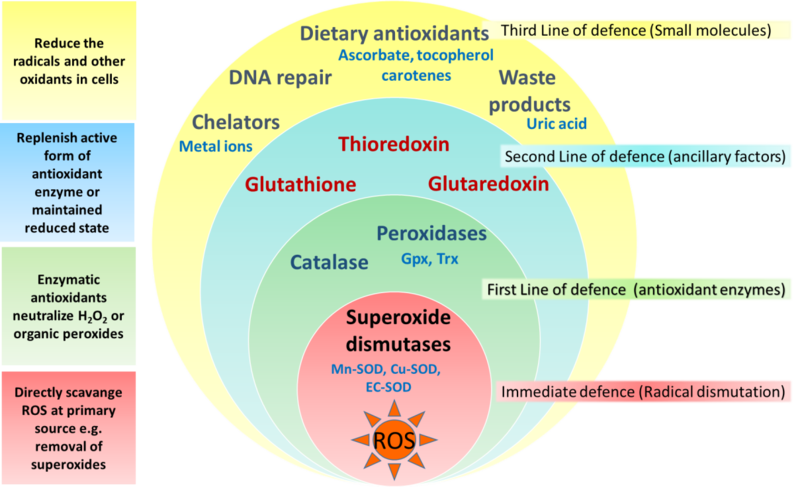
Great post!
!1UP
Thanks for the read
You have received a 1UP from @kwskicky!
@stem-curator, @vyb-curator, @pob-curator, @neoxag-curator, @pal-curatorAnd they will bring !PIZZA 🍕
Learn more about our delegation service to earn daily rewards. Join the family on Discord.
Just imagine! Apart from the unpleasantness of living in noisy places, very few people could have thought about the potential health effects, especially the life span aspect.
Wondering the hope factory workers who are exposed to various kinds of noise have.
Factory noise poses even more danger than living in noisy places because it has higher intensity and highly irregular
Thanks for your contribution to the STEMsocial community. Feel free to join us on discord to get to know the rest of us!
Please consider delegating to the @stemsocial account (85% of the curation rewards are returned).
Thanks for including @stemsocial as a beneficiary, which gives you stronger support.
Interesting read for sure! We take for granted sounds in so many ways. There’s a lot of things to be learned from the correct frequencies, I think I remember reading that a guy in the early 1900’s was using sound waves at very specific levels to help heal people and was fairly successful.
Frequencies are definitely something we need to learn more about, the average person doesn’t understand how important it is on many levels!
Yeah for Sure, sound waves have healing effect on wounds.
There is more to what we are yet to discover
Does this mean Death Metal fans will die earlier (rather appropriately, given the name), or does pleasure enter into it?
Lol....I do love your analogies to most concepts.
Music are sounds of regular frequencies and they have suiting effect to the Brain and human physiology in general. Because they do not in any cause disruptive effects, they to some extent have not much effects. On the other hand, continuous exposure to higher than normal frequency of this music will sure raise oxidative stress biomarkers in such individual.
Thanks for this new interesting blog. It triggered in me a few questions. let me go through them one by one.
The first one is originating from the following:
I knew we were capable to only hear frequencies in the 20 Hz - 20 kHz range (more or less, as the exact bounds depend on each individual), but I didn’t know frequencies outside this range could alter our ear. Do you have information on this. You mentioned in the blog that those sounds could be heard, but you didn’t give details on the damage they could cause. Thanks in advance for clarifications.
I am actually very sensitive to sound in general, and I qualify as noise a lot of things other people would not qualify as noise. This has the problem of irritating me quite deeply, making me somewhat antisocial…
This statement is not fully accurate as it is only valid in air. In other media, the speed of sound is different. For instance, it almost reaches 1500 m/s in water.
My impression is that such a method could be an issue of the problematic tissue lies deep into the body (like gamma ray treatments for instance). Sending ultrasound on it would indeed result in ‘irradiating’ anything between the source and the problematic tissue. How is this solved in practice?
I will try and provide answers to my best of ability...I delved into physics forgetting a critical review is on the Way.. haha.
Alright, so regarding the first question about damage caused by frequency outside the normal range.
Got the information from here. Though there another supporting documents I also saw then, but yet to fetch it again. On finding it, I will drop edit and paste it here. It happens that it mainly has effect on the cochlear, part of the inner ear.
https://www.hear-it.org/unhearable-sounds-can-harm-your-ears
Damage to the cochlear which is the most important structure in the ear mainly responsible for sending the electrical impulse to the Brain for interpretation, will lead to hearing loss.
Second question
What even triggered me in making that statement was when I read about the supposed supersonic jets the US are designing to assist in Ukraine fight against Russia. In that regard, I agree with you that the Statement is partially not true. I think know have a better understanding.😊
With respect to the last question, you are definitely right concerning that, hence reason why it is not really favoured therapeutic approach in Medicine. That a therapeutic procedure is possible doesn't necessarily mean it is used.
Injury of deeper origin most times are not treated with sound waves unless it is the last resort. Secondly, one of the challenge with deeper injuries is that, they will require higher intensity of sound Waves than would tissues with surface injury.
The treatment can be likened to chemotherapy (cancer treatment). You cannot kill cancer cells without harming Normal cells.
In a nutshell, the method is not so commonly practiced here. But the possibility of using sound Waves for tissue healing is there.
I really enjoy the detailed answer you systematically provide to my naive questions and comments. This is really great!
Related to question 1, I guess that now, everything is clear.
I understand the issue. It however seems that it only applies to low frequencies. Do you have other information on damage potentially caused by higher frequency sounds? Thanks in advance!
For the rest of my comment, your reply confirms my thoughts. Great!
Cheers, and have a nice end of the week!
Though my mind didn't even go here.
Will check up to see if any. Will revert as soon as I see.
Thanks a bunch!
Cheers!
https://twitter.com/BenjaminFuks/status/1526298101568397314
The rewards earned on this comment will go directly to the person sharing the post on Twitter as long as they are registered with @poshtoken. Sign up at https://hiveposh.com.
This is an excellent article. I've been dealing with the sounds of cars passing by from the highway near our house for the past 3 years. The result? I became extremely anxious and angry. I didn't know at first, but soon I discovered that those noises caused anxiety. I'm trying to move somewhere else now...
Thanks for the compliment...it's a good step you took there I must say.
Health is wealth. Our mental sanity is of utmost importance